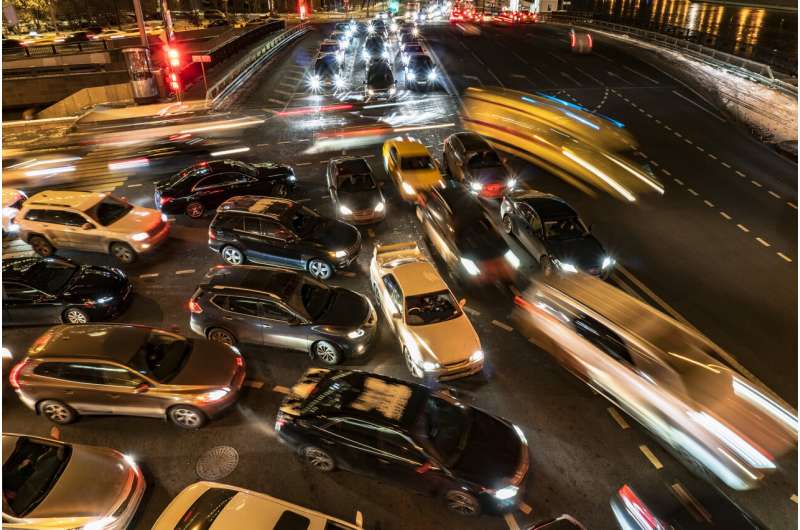Researchers create more accurate measurements to understand how city planning and land use leads to current traffic congestion. Credit: UTSA
City planners predict that as more people move into urban areas, traffic jams will get worse. That's why sustainability expert Neil Debbage, an assistant professor in the UTSA College of Liberal and Fine Arts' Department of Political Science and Geography, proposes a new way to analyze traffic congestion.
Using more precise measures to describe the shape of cities and considering other socioeconomic factors, the model, which was applied to nearly 100 American cities, could lead to a better understanding of the link between congestion and land use.
"Anecdotally, we often hear that more sprawling cities like San Antonio suffer from worse traffic congestion, but we wanted to test this relationship by analyzing a large number of cities with diverse urban forms."
Previously, indirect metrics, such as population density, job location and the total number of homes within a defined area, were used to estimate traffic congestion. Working alongside with Mingshu Wang, associate professor at the University of Glasgow, a new approach was designed based on the configuration of land use within cities.
The model also used new variables, including the level of intensity of urban land use and congestion type, and control variables, such as median age, total population and the presence of auto commuters to determine their impact on congestion.
The researchers used congestion data from the Urban Mobility Scorecard (UMS) database. This source combines real-time speed data, volume and roadway information from the Federal Highway Administration. Specifically, congestion was defined according to annual excess fuel consumed during rush hours and free-flowing traffic, annual hours of delay during rush hour and off-peak times, and a time travel index based on the ratio between travel time during rush hour divided by the time of the same trip under free-flowing conditions.
This more precise definition of congestion helped Wang and Debbage answer three specific questions: What city type, either those with one dominant urban center or multiple centers, creates more congestion? Which types of urban land use, such as high-intensity or low-intensity, are associated with congestion? What are the relationships between the shape of a city and congestion and how do those links vary depending on the specific type of congestion analyzed?
The UTSA-Glasgow model indicated that cities with more urban land use were associated with higher congestion levels. The researchers' findings support the long-held belief that traffic congestion is tied to urbanization, but also highlighted that high-intensity urban land use played a more notable role.
The researchers also found that the shape of cities impacted congestion. Cities that had one dominant urban core generally were associated with lower levels of congestion while more polycentric cities, those with multiple urban centers, suffered from more traffic. The study found that the shape of cities had more of an impact on general congestion than traffic just during rush hour periods.
"By analyzing different land use intensities, we were able to identify more precisely what aspects of city shape influence congestion, which can hopefully inform more tailored land use policy responses."
The research was published in the September issue of Computers, Environment and Urban Systems.
More information: Mingshu Wang et al, Urban morphology and traffic congestion: Longitudinal evidence from US cities, Computers, Environment and Urban Systems (2021). DOI: 10.1016/j.compenvurbsys.2021.101676
Provided by University of Texas at San Antonio
























